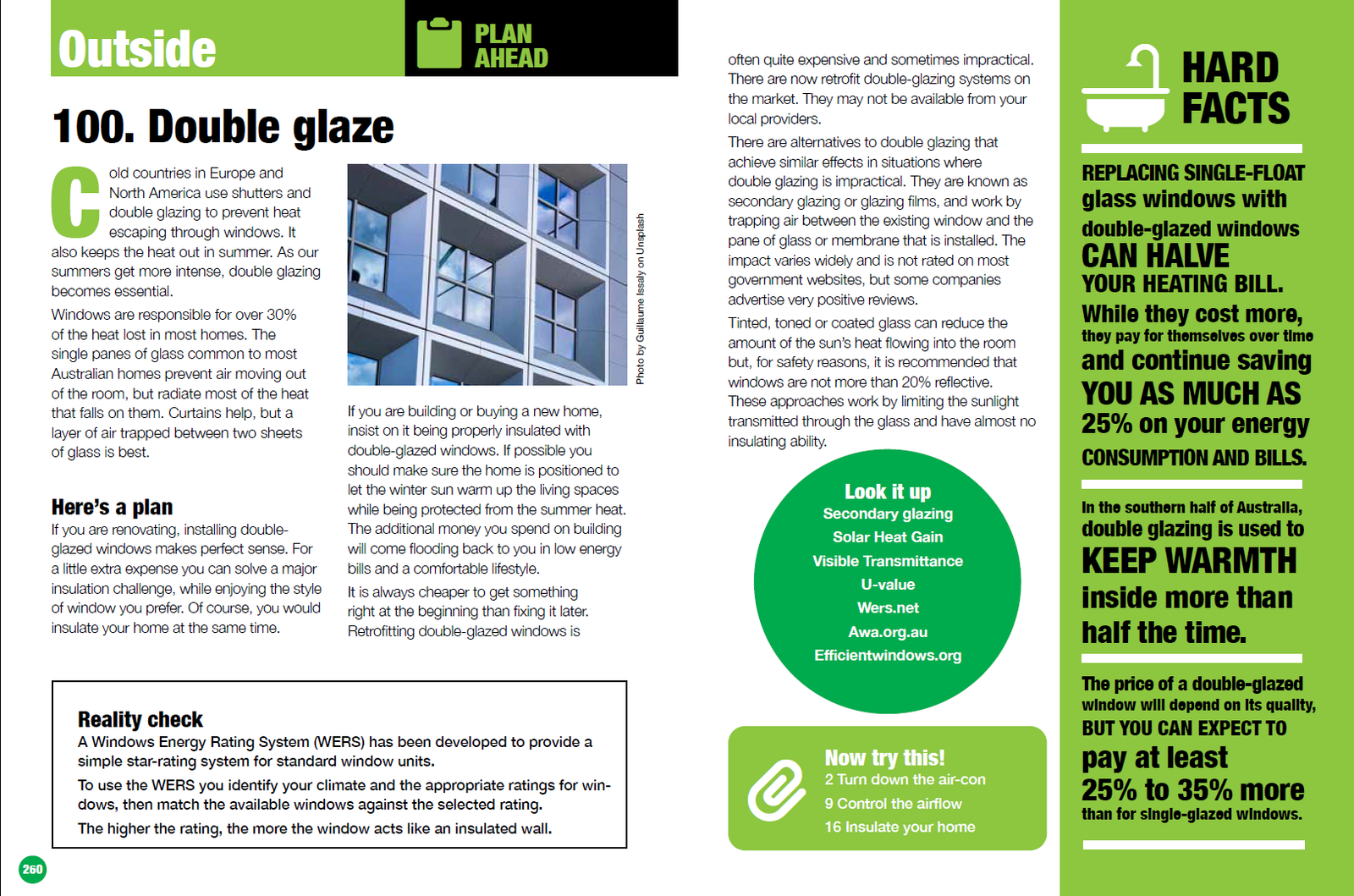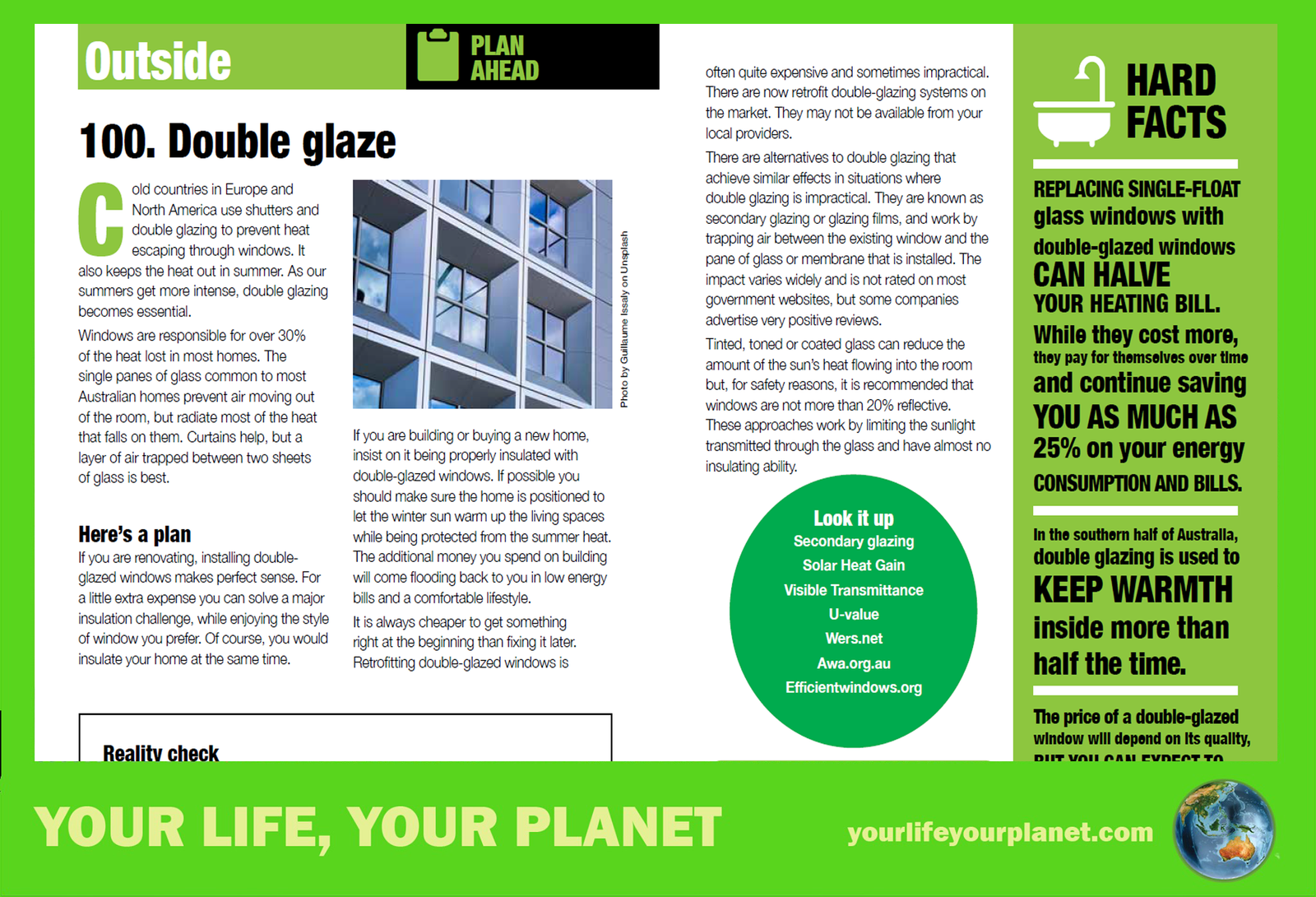Cold countries in Europe and North America use shutters and double glazing to prevent heat escaping through windows. It also keeps the heat out in summer. As our summers get more intense, double glazing becomes essential.
Windows are responsible for over 30% of the heat lost in most homes. The single panes of glass common to most Australian homes prevent air moving out of the room, but radiate most of the heat that falls on them. Curtains help, but a layer of air trapped between two sheets of glass is best.

Here’s a plan
If you are renovating, installing double-glazed windows makes perfect sense. For a little extra expense you can solve a major insulation challenge, while enjoying the style of window you prefer. Of course, you would insulate your home at the same time.
If you are building or buying a new home, insist on it being properly insulated with double-glazed windows. If possible you should make sure the home is positioned to let the winter sun warm up the living spaces while being protected from the summer heat. The additional money you spend on building will come flooding back to you in low energy bills and a comfortable lifestyle.
It is always cheaper to get something right at the beginning than fixing it later. Retrofitting double-glazed windows is often quite expensive and sometimes impractical. There are now retrofit double-glazing systems on the market. They may not be available from your local providers.
There are alternatives to double glazing that achieve similar effects in situations where double glazing is impractical. They are known as secondary glazing or glazing films, and work by trapping air between the existing window and the pane of glass or membrane that is installed. The impact varies widely and is not rated on most government websites, but some companies advertise very positive reviews.
Tinted, toned or coated glass can reduce the amount of the sun’s heat flowing into the room but, for safety reasons, it is recommended that windows are not more than 20% reflective. These approaches work by limiting the sunlight transmitted through the glass and have almost no insulating ability.
See also – In Germany we call them windows.
